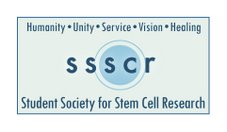April 2008 Volume 8 Number 4
Visit Nature Reviews Cancer online to browse the journal.
Now available at http://ealerts.nature.com/cgi-bin24/DM/y/ejmB0Xztnp0Hja0cZl0Eq
Please note that you need to be a subscriber to enjoy full text access to Nature Reviews Cancer online. To purchase a subscription, please visit:
http://ealerts.nature.com/cgi-bin24/DM/y/ejmB0Xztnp0Hja0a5J0Ed
Alternatively, to recommend a subscription to your library, please visit
http://ealerts.nature.com/cgi-bin24/DM/y/ejmB0Xztnp0Hja0sRD0EK
*********************************************************************
Nature Reviews Cancer Impact Factor: 31.583*
(*Journal Citation Reports, Thomson, 2006)
*********************************************************************
=====================================================================
IT'S NOW FREE TO POST YOUR VACANCY ON
naturejobs.com http://ealerts.nature.com/cgi-bin24/DM/y/ejmB0Xztnp0Hja0bZD0EB
It's the breakthrough you've been waiting for. Naturejobs.com — the scientific jobs board from Nature —
now lets you advertise your vacancy completely FREE OF CHARGE
Go to http://ealerts.nature.com/cgi-bin24/DM/y/ejmB0Xztnp0Hja0BGJp0EI or telephone:
Europe: +44 (0) 20 78434961
US: + 1 800 9897718
=====================================================================
=====================================================================
Nature Reviews Stem Cell Collection
Free online access
Stem-cell research has a history of more than 20 years, and has made some outstanding contributions to our understanding of haematopoiesis and embryology. The Nature Reviews journals present a Stem Cell Collection, which includes Research Highlights, Reviews and Perspectives articles from Nature Reviews Cancer, Nature Reviews Immunology and Nature Reviews Molecular Cell Biology.
All these articles will be available free online for six months at:
http://ealerts.nature.com/cgi-bin24/DM/y/ejmB0Xztnp0Hja0Bqfi0EL
=====================================================================
=====================================================================
This month's FEATURED article:
The Cdk inhibitor p27 in human cancer: prognostic potential and relevance to anticancer therapy
Isabel M. Chu, Ludger Hengst and Joyce M. Slingerland
p253 | doi:10.1038/nrc2347
http://ealerts.nature.com/cgi-bin24/DM/y/ejmB0Xztnp0Hja0BqcX0Ez
=====================================================================
From the editors
p243 | doi:10.1038/nrc2370
http://ealerts.nature.com/cgi-bin24/DM/y/ejmB0Xztnp0Hja0BqcY0E1
=====================================================================
---------------------
RESEARCH HIGHLIGHTS
----------------------
Stem cells: MicroRNAs promote differentiation
p245 | doi:10.1038/nrc2357
http://ealerts.nature.com/cgi-bin24/DM/y/ejmB0Xztnp0Hja0BqcZ0E2
Radiation therapy: Sensitizing stem cells
p246 | doi:10.1038/nrc2358
http://ealerts.nature.com/cgi-bin24/DM/y/ejmB0Xztnp0Hja0Bqca0EA
Tumour suppressors: Spread your wings
p246 | doi:10.1038/nrc2362
http://ealerts.nature.com/cgi-bin24/DM/y/ejmB0Xztnp0Hja0Bqcb0EB
IN THE NEWS
Supplementary information
p246 | doi:10.1038/nrc2366
http://ealerts.nature.com/cgi-bin24/DM/y/ejmB0Xztnp0Hja0Bqcc0EC
Metabolism: Warburg effect revisited
p247 | doi:10.1038/nrc2364
http://ealerts.nature.com/cgi-bin24/DM/y/ejmB0Xztnp0Hja0Bqcd0ED
Metastasis: A metastatic switch
p248 | doi:10.1038/nrc2359
http://ealerts.nature.com/cgi-bin24/DM/y/ejmB0Xztnp0Hja0Bqce0EE
DNA repair: A major Ku?
p248 | doi:10.1038/nrc2360
http://ealerts.nature.com/cgi-bin24/DM/y/ejmB0Xztnp0Hja0Bqcf0EF
TRIAL WATCH
On your mind | Repairin' the brain
p248 | doi:10.1038/nrc2367
http://ealerts.nature.com/cgi-bin24/DM/y/ejmB0Xztnp0Hja0Bqcg0EG
IN BRIEF
Tumour suppression | Tumorigenesis | Mechanotransduction
p249 | doi:10.1038/nrc2365
http://ealerts.nature.com/cgi-bin24/DM/y/ejmB0Xztnp0Hja0Bqch0EH
Tumorigenesis: A marked CARD
p250 | doi:10.1038/nrc2361
http://ealerts.nature.com/cgi-bin24/DM/y/ejmB0Xztnp0Hja0Bqci0EI
Tumorigenesis: Turning the hands of time
p250 | doi:10.1038/nrc2363
http://ealerts.nature.com/cgi-bin24/DM/y/ejmB0Xztnp0Hja0Bqcj0EJ
Drug resistance: Out on the full
p251 | doi:10.1038/nrc2356
http://ealerts.nature.com/cgi-bin24/DM/y/ejmB0Xztnp0Hja0Bqck0EK
----------------------
REVIEWS
----------------------
The Cdk inhibitor p27 in human cancer: prognostic potential and relevance to anticancer therapy
Isabel M. Chu, Ludger Hengst and Joyce M. Slingerland
p253 | doi:10.1038/nrc2347
The cyclin-dependent kinase (Cdk) inhibitor p27 regulates cell proliferation, cell motility and apoptosis, and is inactivated through various means in many types of human cancer. Recent studies in several tumour types indicate that p27 expression levels have both prognostic and therapeutic implications.
Abstract: http://ealerts.nature.com/cgi-bin24/DM/y/ejmB0Xztnp0Hja0Bqcl0EL
Article: http://ealerts.nature.com/cgi-bin24/DM/y/ejmB0Xztnp0Hja0BqcX0Ez
Prostate-specific antigen and prostate cancer: prediction, detection and monitoring
Hans Lilja, David Ulmert and Andrew J. Vickers
p268 | doi:10.1038/nrc2351
Testing for prostate-specific antigen is a powerful tool in the detection of prostate cancer, but how should it be used and how can testing be improved to ensure against overdiagnosis?
Abstract: http://ealerts.nature.com/cgi-bin24/DM/y/ejmB0Xztnp0Hja0Bqcm0EM
Article: http://ealerts.nature.com/cgi-bin24/DM/y/ejmB0Xztnp0Hja0Bqcn0EN
GATA1-related leukaemias
Ritsuko Shimizu, James Douglas Engel and Masayuki Yamamoto
p279 | doi:10.1038/nrc2348
This Review examines whether GATA1-related leukaemias in both human and mouse can provide important insights into the mechanism of multi-step leukaemogenesis.
Abstract: http://ealerts.nature.com/cgi-bin24/DM/y/ejmB0Xztnp0Hja0Bqco0EO
Article: http://ealerts.nature.com/cgi-bin24/DM/y/ejmB0Xztnp0Hja0Bqcp0EP
The distinctive biology of cancer in adolescents and young adults
Archie Bleyer, Ronald Barr, Brandon Hayes-Lattin, David Thomas, Chad Ellis, and Barry Anderson on behalf of the Biology and Clinical Trials Subgroups of the US National Cancer Institute Progress Review Group in Adolescent and Young Adult Oncology
p288 | doi:10.1038/nrc2349
One explanation for the relative lack of progress in treating cancer in adolescents and young adults is that the biology of malignant diseases in this age group is different. Do molecular, epidemiological and therapeutic outcome comparisons support this?
Abstract: http://ealerts.nature.com/cgi-bin24/DM/y/ejmB0Xztnp0Hja0Bqcq0EQ
Article: http://ealerts.nature.com/cgi-bin24/DM/y/ejmB0Xztnp0Hja0Bqcr0ER
Adoptive cell transfer: a clinical path to effective cancer immunotherapy
Steven A. Rosenberg, Nicholas P. Restifo, James C. Yang, Richard A. Morgan and Mark E. Dudley
p299 | doi:10.1038/nrc2355
Adoptive cell therapy (ACT), using either autologous tumour-infiltrating lymphocytes or donor lymphocytes, has proved an effective treatment for some patients with advanced cancers. Can the ability to genetically engineer human lymphocytes for ACT further expand the use of this treatment?
Abstract: http://ealerts.nature.com/cgi-bin24/DM/y/ejmB0Xztnp0Hja0Bqcs0ES
Article: http://ealerts.nature.com/cgi-bin24/DM/y/ejmB0Xztnp0Hja0Bqct0ET
----------------------
PERSPECTIVE
----------------------
OPINION
Lessons from multidisciplinary translational trials on anti-angiogenic therapy of cancer
Rakesh K. Jain
p309 | doi:10.1038/nrc2346
Making multidisciplinary translational clinical trials work successfully is complex and challenging. Rakesh Jain presents his perspective on the lessons he and his team have learned from two such trials in patients with advanced rectal cancer or glioblastoma.
Abstract: http://ealerts.nature.com/cgi-bin24/DM/y/ejmB0Xztnp0Hja0Bqcu0EU
Article: http://ealerts.nature.com/cgi-bin24/DM/y/ejmB0Xztnp0Hja0Bqcv0EV
Erratum: MYC in mammalian epidermis: how can an oncogene stimulate differentiation? (Erratum)
Fiona M. Watt, Michaela Frye and Salvador Aznar Benitah
p316 | doi:10.1038/nrc2369
http://ealerts.nature.com/cgi-bin24/DM/y/ejmB0Xztnp0Hja0Bqcw0EW
=====================================================================
Nature Reviews Immunology Poster on innate immunity: sensing and signalling
The innate immune system is the first line of defence against invading pathogens. Detection of such pathogens is a complex business, involving several families of pattern-recognition receptors and an array of signalling molecules.
This poster provides an overview of the components and networks involved in pathogen sensing and signalling in the innate immune system.
Access the Poster FREE online!
http://ealerts.nature.com/cgi-bin24/DM/y/ejmB0Xztnp0Hja0BqBG0EB
=====================================================================
You have been sent this Table of Contents Alert because you have opted in to receive it. You can change or discontinue your e-mail alerts at any time, by modifying your preferences on your nature.com account at:
http://ealerts.nature.com/cgi-bin24/DM/y/ejmB0Xztnp0Hja0Zzu0EO
(You will need to log in to be recognised as a nature.com registrant).
For further technical assistance, please contact our registration department:
registration@nature.com
For print subscription enquiries, please contact our subscription department:
subscriptions@nature.com
For other enquiries, please contact our customer feedback department:
feedback@nature.com
Nature Publishing Group | 75 Varick Street, 9th Floor | New York | NY 10013-1917 | USA
Nature Publishing Group's worldwide offices:
London - Paris - Munich - New Delhi - Tokyo - Melbourne -
San Diego - San Francisco - Washington - New York - Boston
(c) Copyright 2008 Nature Publishing Group
=====================================================================










